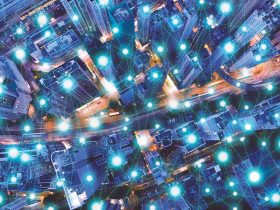Rob and I have been friends for many years even though we were brought up on different sides of the tracks. By different sides of the tracks I mean Rob is a National Electrical Code (NEC) inspector and I am a National Electrical Safety Code (NESC) inspector. Up until the time we met, I didn’t know much about the NEC and Rob didn’t know much about the NESC. This lack of knowledge of the other code is common. Ever since I joined the IAEI, I noticed that most of the NEC experts have very little knowledge of the NESC and that most of the NESC experts have very little knowledge of the NEC.
There are not many “two code” experts out there. The reason for the lack of knowledge is because the two codes are very different.
The NESC
In general, the construction personnel who build the facilities covered by the NESC have no knowledge of the NESC because it is difficult to understand if you are not an engineer. Some of the NESC is difficult to understand even if you are an engineer. For example, the NESC in Rule 384A (page 193) requires metal pad-mounted electrical equipment cases and enclosures to be “effectively grounded.” In the definitions section (page 6) it describes “effectively grounded” as “Intentionally connected to earth through a ground connection or connections of sufficient low impedance and having sufficient current-carrying capacity to limit the buildup of voltages to levels below that which may result in undue hazard to persons or to connected equipment.” It is no wonder that the construction personnel do not understand the NESC.
The NEC
In contrast, the NEC in Sections 250-30(a)(1) through (4) (page 85) states specific requirements for grounding separately derived systems (up to 1000 volts), specifically where bonding jumper connections may be made, grounding electrode conductor size and what is to be considered as a grounding electrode. The NEC continues in Sections 250-188 and 250-190 to state specific requirements for grounding systems and equipment of 1000 volts and over (high voltage).
However, the NEC in Article 100 (page 21) defines “grounded, effectively” as “Intentionally connected to earth through a ground connection or connections of sufficiently low impedance and having sufficient current-carrying capacity to prevent the buildup of voltages that may result in undue hazards to connected equipment or to persons.” Sound familiar?
The two codes cover different facilities
Unfortunately, the dividing line is exceedingly vague. The confusion lies within the text of the two codes and in the laws that require code compliance.
The world according to the NESC
The NESC in the definitions section breaks the electrical world in to two pieces, electric supply facilities and electric utilization equipment. Electric supply facilities are made up of electric supply lines and electric supply stations. On page 8, the NESC defines electric supply lines as “Those conductors used to transmit electric energy and their necessary supporting or containing structures.”
On page 6, the NESC defines electric supply stations as “Any building, room, or separate space within which electric supply equipment is located and the interior of which is accessible, as a rule, only to qualified persons.
This includes generating stations and substations, including their associated generator, storage battery, transformer, and switching rooms or enclosures, but does not include facilities such as pad-mounted equipment and installations in manholes and vaults.” Pad-mounted equipment and installations in manholes and vaults can be supply facilities even though they are not considered electric supply stations.
Electric utilization equipment is defined on page 11 as “Equipment, devices, and connected wiring that utilize electric energy for mechanical, chemical, heating, lighting, testing, or similar purposes and are not part of supply equipment, supply lines, or communication lines.” On page 1, the NESC in Rule 011 defines the scope of the NESC to cover “…supply and communication lines, equipment, and associated work practices employed by a public or private electric supply, communications, railroad, or similar utility in the exercise of its function as a utility.”
The rules also cover “…similar systems under the control of qualified persons, such as those associated with an industrial complex or utility interactive system.” The NESC clearly states, “…For building utilization wiring requirements, see the National Electrical Code (NEC)….” Until I got involved with lawsuits involving customer-owned electric supply facilities, I assumed that all “electric supply” facilities had to comply with the NESC and that all “electric utilization equipment” had to comply with the NEC regardless of ownership.
The world according to the NEC
The NEC in Article 100 (page 24) clearly defines “…the point of connection between the facilities of the service utility and the premises wiring” as the “service point.” However, the NEC does not define the coverage of the code as clearly. The NEC in Section 90-2(a)(1) (page 17) states this Code covers “Installations of electric conductors and equipment within or on public and private buildings or other structures…” and in a FPN (fine print note) suggests consulting the NESC “for additional information concerning such installations in an industrial or multibuilding complex…”
The NEC in Section 90-5(c) (page 18) states that fine print notes “…are informational only and are not enforceable as requirements of the code.” The NEC in Section 90-2(b)(5) states that this Code does not cover “Installations…under the exclusive control of electric utilities for the purpose of communications, metering, generation, control, transformation, transmission or distribution of electric energy.
Such installations shall be located in buildings used exclusively by utilities for such purposes; outdoors on property owned or leased by utility; or on or along public highways, streets, roads, etc.; or outdoors on private property by established rights such as easements.”
Article 490 (page 303) in the NEC covers the general requirements for equipment operating at more than 600 volts, nominal, but this does not provide sufficient guidance for installations such as private high-voltage substations, distribution lines, and transmission lines.
The state laws
To complicate matters, the regulatory authorities in each state often disagree about the coverage of the NESC and NEC.
Most states’ public service commissions or equivalent regulatory authority require by law that electric facilities owned and maintained by electric utilities comply with the NESC.
Most states’ State Board of Electrical Examiners or equivalent authority require by law that non-utility owned electric facilities comply with the NEC, installed by licensed electricians, and inspected by an authorized electrical inspection agency. The problem is that in the Conectiv Power Delivery territory, like many other utilities throughout the country, there are over five hundred customers (non-utilities) who thereby own their own electric supply facilities.
These facilities are on the customer side of the “service point.” Some of these facilities are high voltage electric supply substations and supply lines to buildings in multibuilding-building commercial or industrial complexes. The voltages are as high as 138,000 volts.
Obviously, the requirements of the NEC do not adequately cover such facilities. Unfortunately, the law only requires compliance of these facilities with the NEC.
My company often gets dragged into lawsuits involving injury or death of people involved with customer-owned supply facilities. The consultant who designed the facilities usually says the facility complies with the NEC as required by law.
The electrical inspection agency usually says they inspected the electrical facilities within the buildings and assumed the consultant designed the exterior supply facilities to comply with the NESC.
The plaintiff’s attorney usually convinces the jury that the facilities should have been constructed per the NESC code even though the law is vague.
Because of this confusion within the codes and the laws, we continue to have accidents involving customer-owned electric supply facilities and electricians continue to call with questions like, “What is the rated voltage of a plastic hard hat” since the 12,000-volt open bus in their substation is so low they can bump their heads on it.
One solution
It is our opinion that the NESC and the NEC committees need to change the codes so that there is no question as to what each covers. The two codes are not in competition.
Let’s all work together to make all electrical facilities reasonably safe. If the terms “supply facilities” and “utilization facilities” are used to define the coverage of the codes, the definitions must be identical in both codes.
The NESC must state that it covers electric supply facilities.
The NEC must state that it covers utilization facilities. Each code must require the other facilities to comply with the other code.
With these changes, if the state laws continue to require all customer-owned electric facilities to be inspected by authorized inspection agencies, then the agency personnel will have to be trained in the NESC. Since that isn’t going to happen, we strongly recommend that the states only require the utilization facilities to be inspected and the consultant, the registered professional engineer who designs the supply facilities, be held responsible for the design and the contractor who builds the supply facilities be held responsible for the construction.
Rob and I will be submitting change proposals for the next revisions of the codes to correct this problem.
We welcome your comments on this subject. If you have general questions on the NESC, please contact Dave atdave.young@conectiv.com
National Electrical Code and NEC are registered trademarks of the National Fire Protection Association (NFPA). National Electrical Safety Code and NESC are registered trademarks of the Institute of Electrical and Electronic Engineers (IEEE). The code editions referenced in this article are the 1999 NEC and the 1997 NESC.










Find Us on Socials